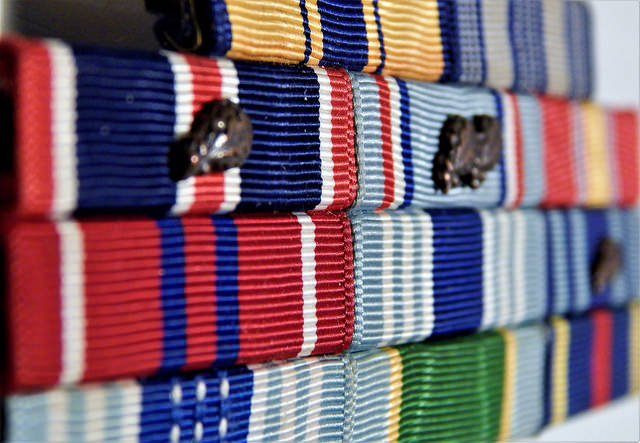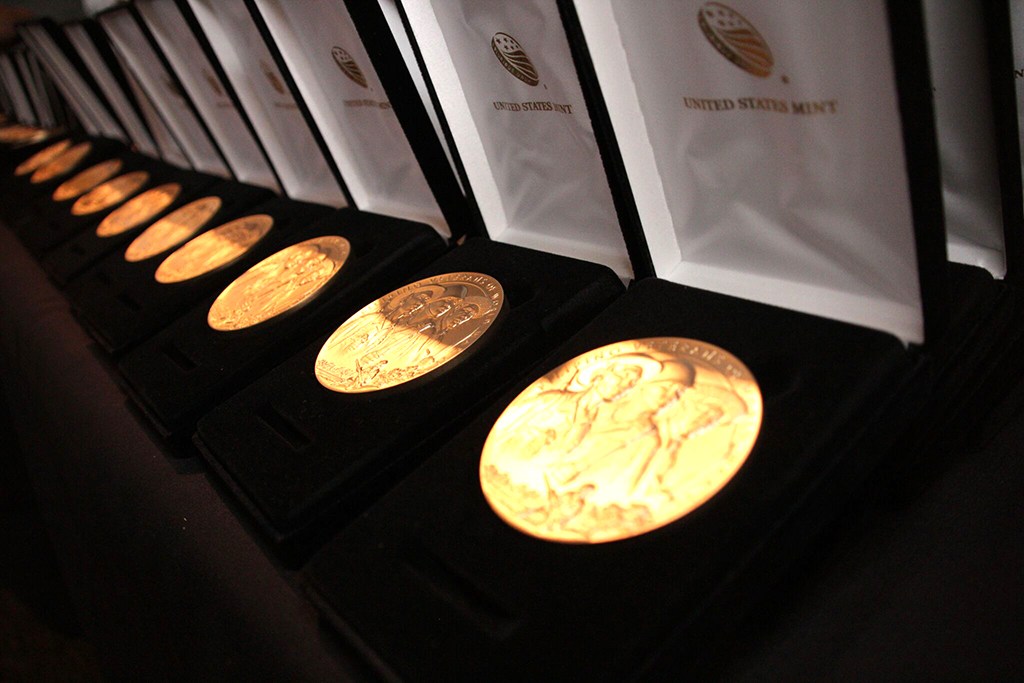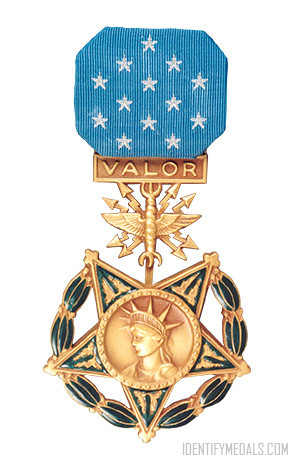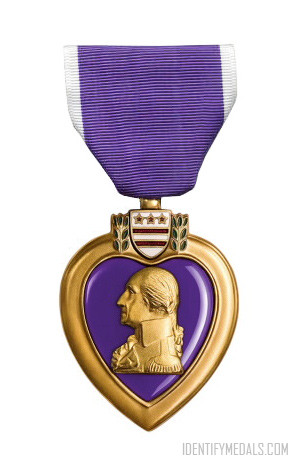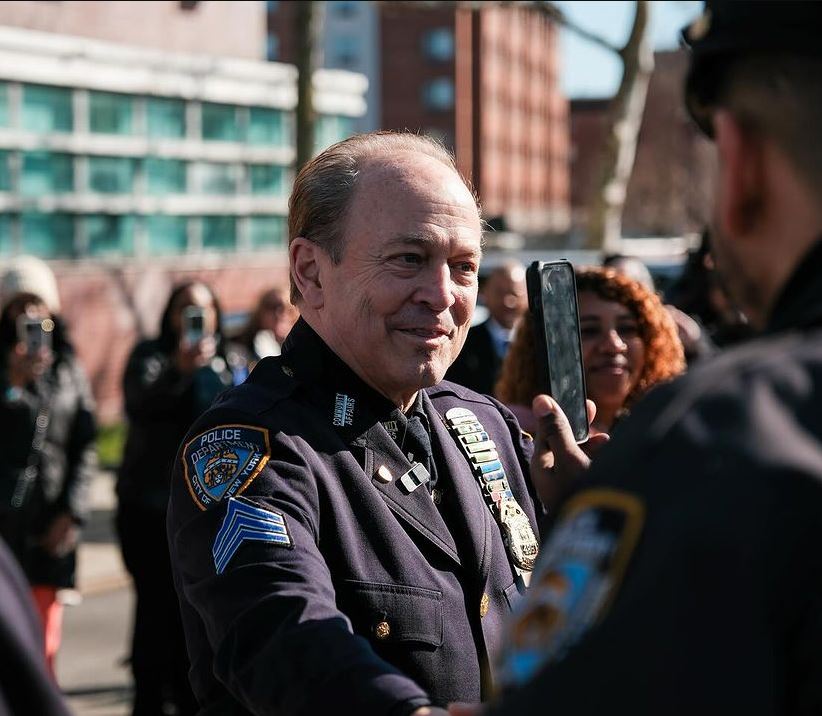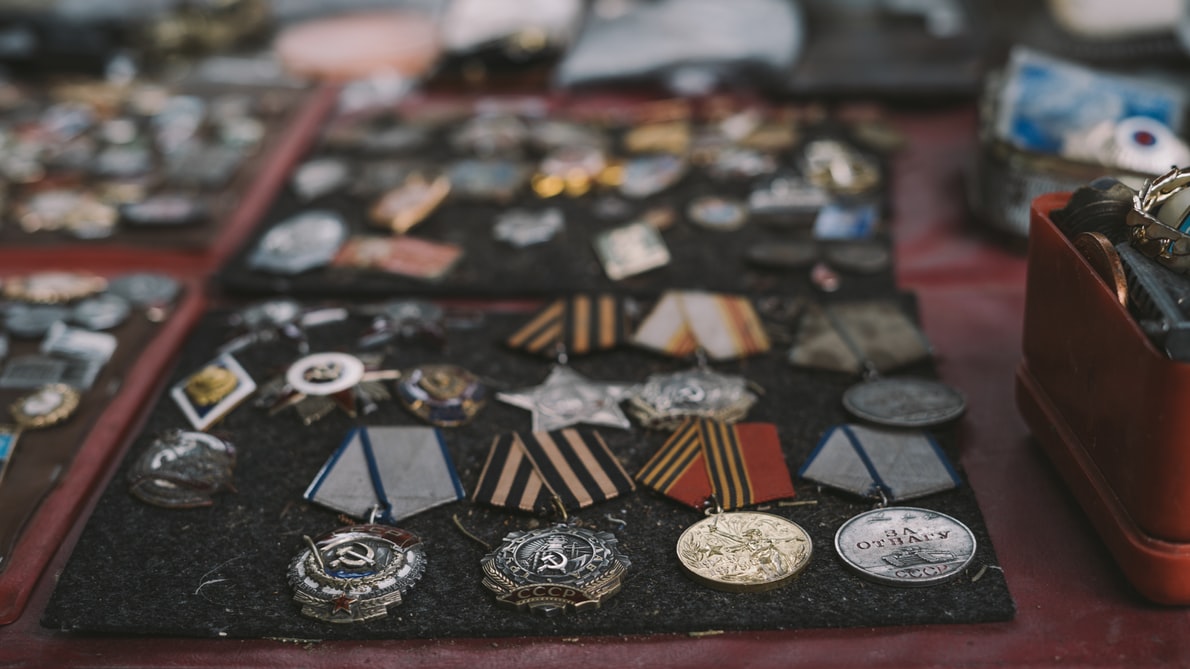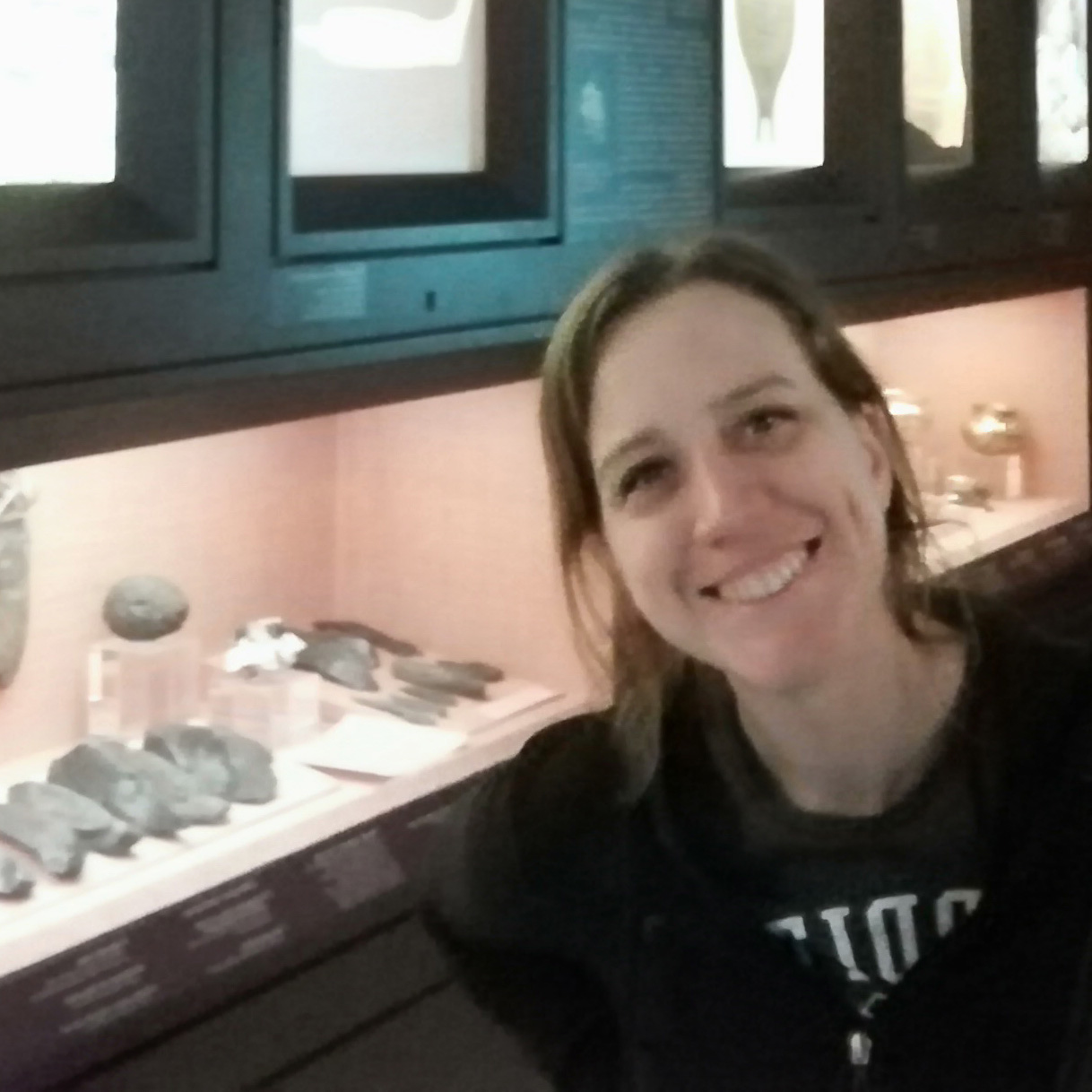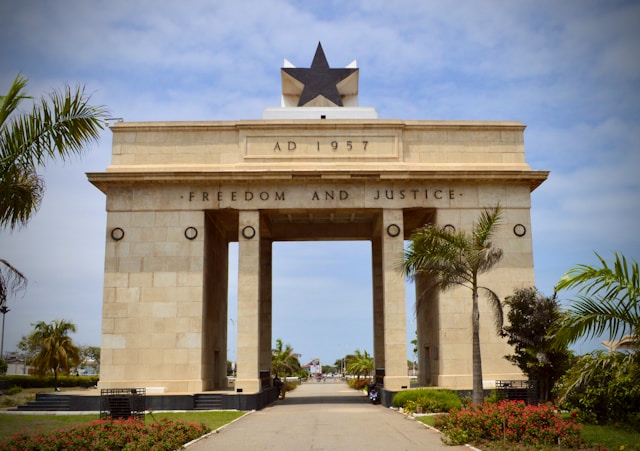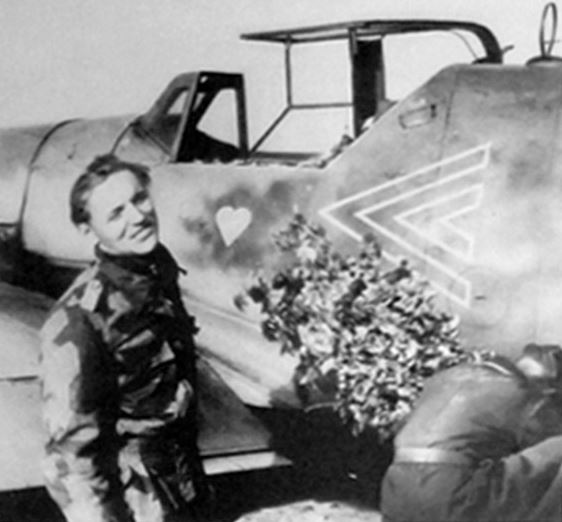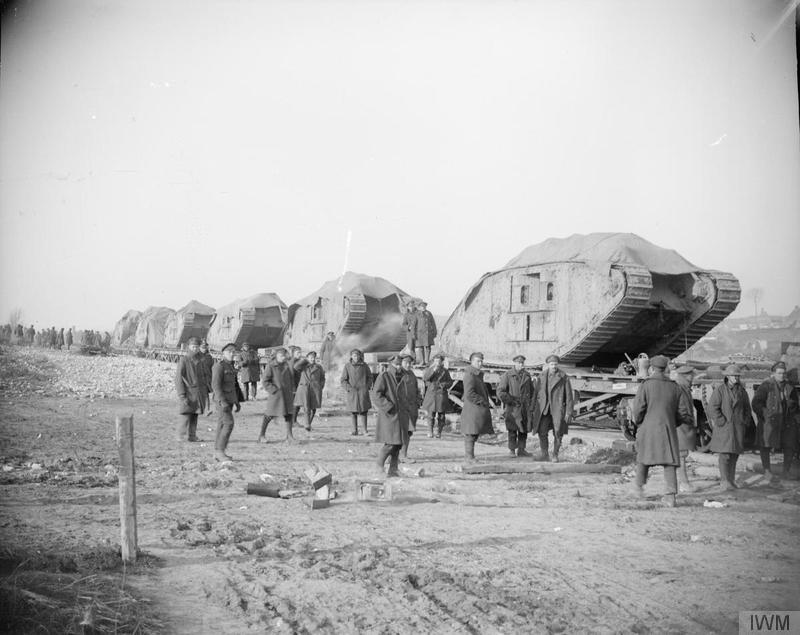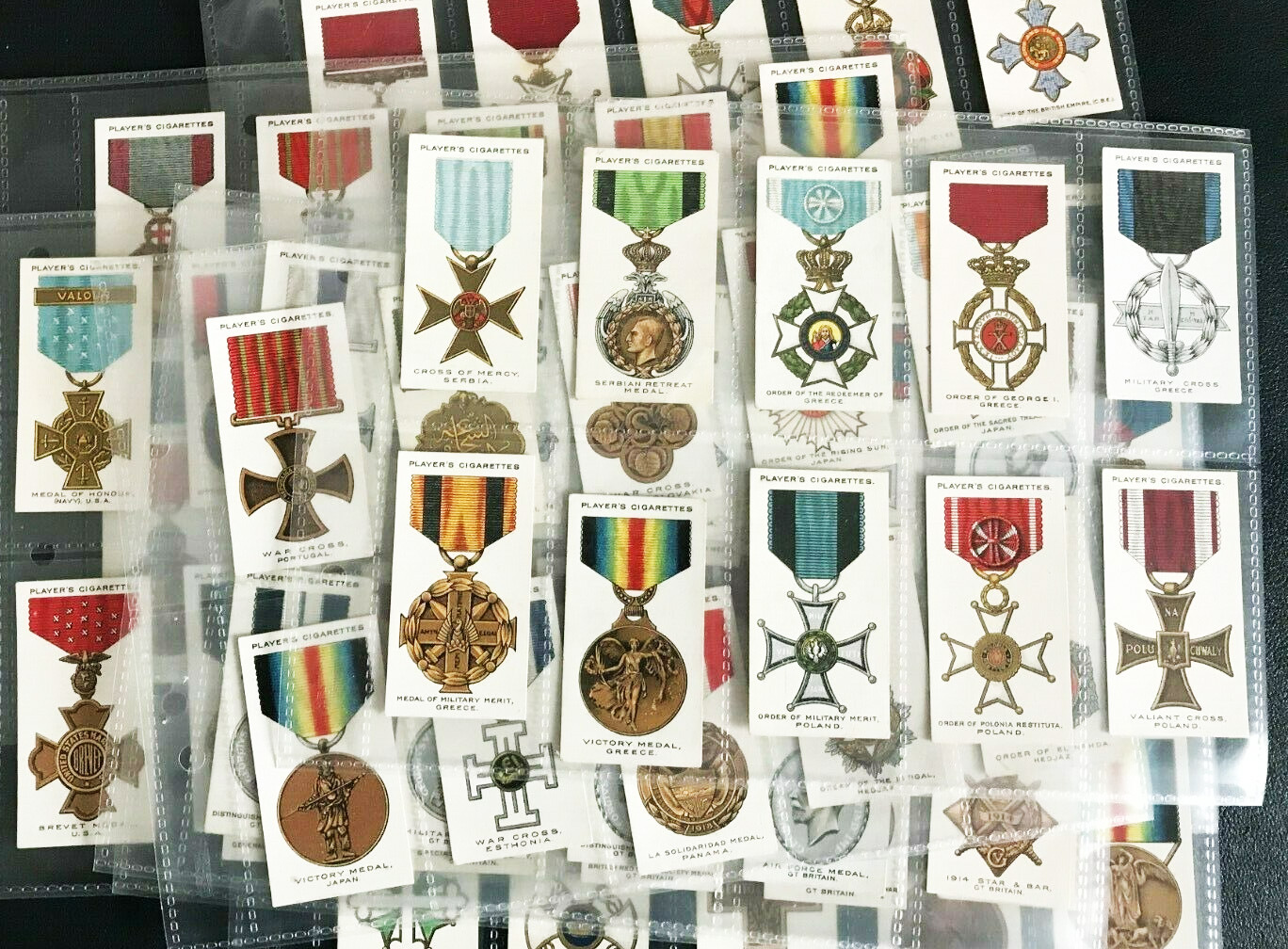No matter what country you’re from, we all owe a huge debt to the countless service members who have risked their lives for our freedom. Some, however, went substantially above and beyond the call of duty and have received numerous medals for their valor and gallantry. While you may not recognize all of these names, it’s important to study the stories of the most decorated U.S. service members—one from each branch of service—who did so much to protect our freedom.
Army
Major Audie Murphy (World War II)
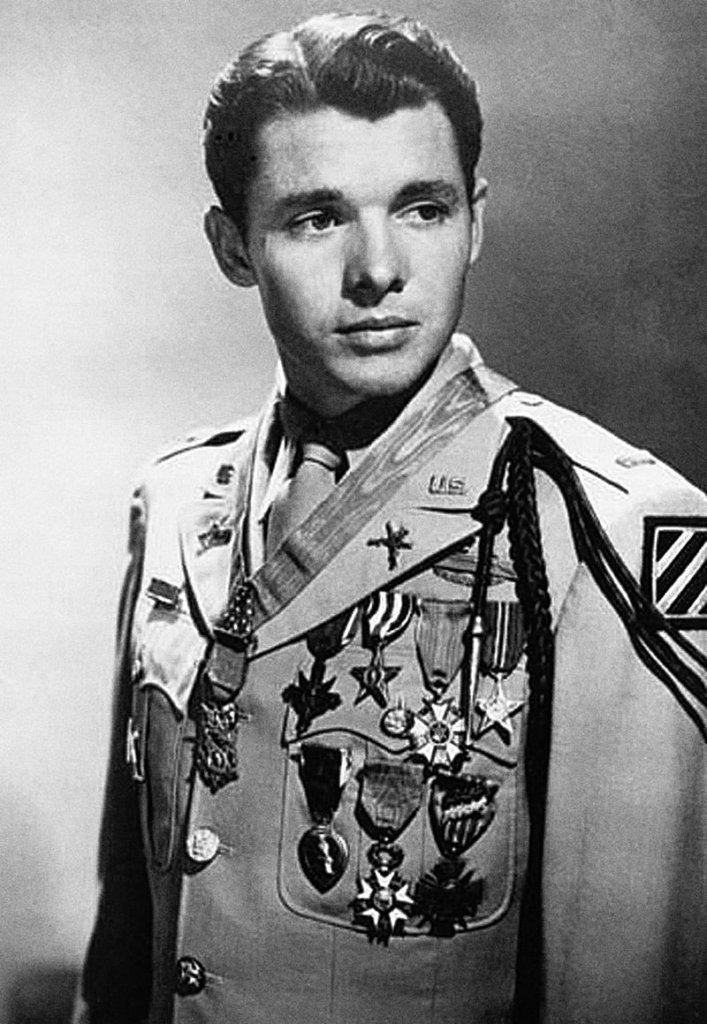
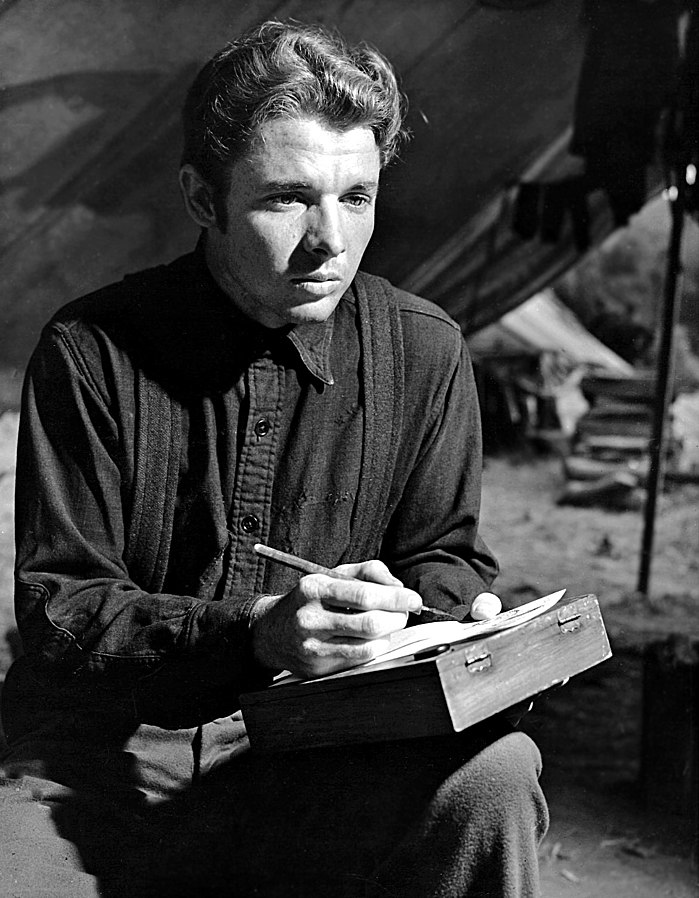
Audie Murphy is a name that many would recognize due to his acting career after the war, but he was also quite the soldier during World War II and is known as the most decorated soldier of World War II. Growing up on a sharecropper’s farm in Hunt County, Texas, Murphy had to assist in raising his 10 siblings after his father left his mother and dealt with the untimely death of his mother when Murphy was only 16.
After Pearl Harbor, Murphy wanted to join the Marine Corps to assist in the war effort and get out of the poor life that he knew and lied about his age in an attempt to enlist in the USMC. However, his height of 5’5” kept him out of the Marines and the paratroopers, so he opted for the infantry. After basic training, Murphy was assigned to B Company, 1st Battalion, 15th Regiment, 3rd Infantry Division currently in North Africa and preparing to invade Sicily in 1943. Murphy would land at Salerno and fight in the Voltuno River campaign and later at Anzio in 1944 as a part of the Allied force fighting to Rome, rising in the ranks from private all the way up to Staff Sergeant.
After the Battle of Cisterna in January, Murphy and the 3rd Division returned to Anzio. On March 2, 1944, Murphy and his platoon held out in an abandoned farmhouse to escape bad weather and annihilated a German tank and its crew that was passing by with rifle grenades. Murphy was awarded the Bronze Star with a “V” (for valor) device for this action. In addition, Murphy and 60 others of B Company, 15th Infantry were awarded the Combat Infantryman Badge on May 8, 1944.
After this time in Italy, Murphy and his unit were withdrawn to train for Operation Anvil-Dragoon, the invasion of southern France, which Murphy took part in where he and his platoon were attacked by German soldiers as they fought through a vineyard. Grabbing a machine gun, Murphy returned fire, killing two Germans and wounded one and then killed six, wounded two more, and took 11 German prisoners from a house 100 yards away. For these actions on August 15, 1944, Murphy was awarded the Distinguished Service Cross. The 1st Battalion also received a Presidential Unit Citation for their fighting around Montélimar.
In September 1944, Murphy received a Purple Heart from mortar shrapnel, and he also received a Silver Star medal for charging a German machine gun position, killing four and wounding three. Murphy would later add a Bronze Leaf to his Silver Star, indicating an additional act of valor. Murphy had directed fire against the Germans under constant, direct fire, resulting in the death of 15 enemy soldiers and 35 wounded.
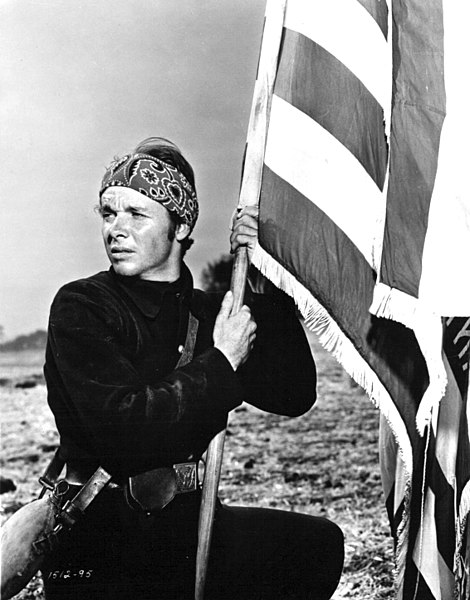
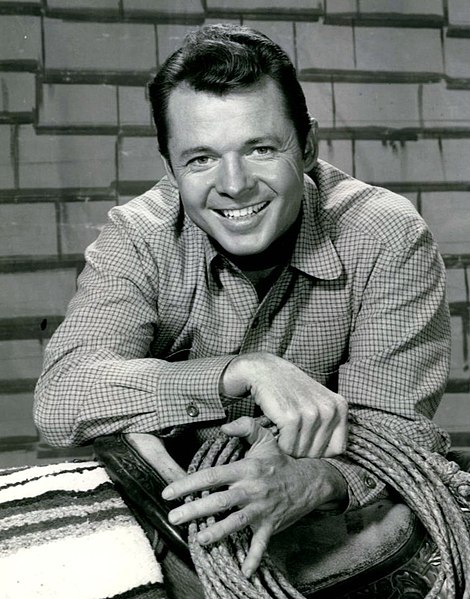
Murphy’s most heroic act, however, happened on January 26, 1945 near the village of Holtzwihr in eastern France. Faced with six Panzer tanks and 250 infantryman, Murphy and his men fell back to increase their defenses. Murphy mounted an abandoned burning task and repelled the German advance for nearly an hour alone and with a single machine gun, even through a wound in the leg. Murphy single-handedly killed 50 Germans and allowed Murphy and his men to counterattack and drive the enemy from Holtzwihr.
Murphy received the Medal of Honor and Legion of Merit for this action on June 2, 1945 in Salzburg, Austria. After the war when asked about his decision to seize the machine gun and take on a company of German infantry single-handedly, Murphy replied, “They were killing my friends.”
At the end of the war, Murphy had become America’s most decorated soldier, receiving every U.S. military combat award for valor available from the U.S. Army as well as three medals from France and one from Belgium. This included the American Campaign Medal, the European–African–Middle Eastern Campaign Medal with arrowhead device and 9 campaign stars, the World War II Victory Medal, and the Army of Occupation Medal with Germany Clasp for U.S. medals.
Murphy received the following medals and accolades from France: the French Legion of Honor – Grade of Chevalier, the French Croix de Guerre with Silver Star, the French Croix de Guerre with Palm, the French Liberation Medal, and the French Fourragère in Colors of the Croix de Guerre, which was authorized for all members of the 3rd Infantry Division who fought in France during World War II. Finally, Belgium awarded Murphy the Belgian Croix de Guerre with 1940 Palm. Murphy would receive all of these medals before he turned 22 years old.
When Murphy came back from the war, he became an actor and was featured in forty films, including the film adaption of his book, To Hell and Back. He had to sleep with a pistol underneath his pillow because he suffered from what we would now call PTSD. Murphy died at the age of 46 due to a private plane crash near Roanoke, Virginia in 1971. He is buried in Arlington National Cemetery and has the most visited grave after John F. Kennedy and the Unknown Soldier.
Navy
Boatswain’s Mate First Class James “Willie” Williams (Vietnam War)
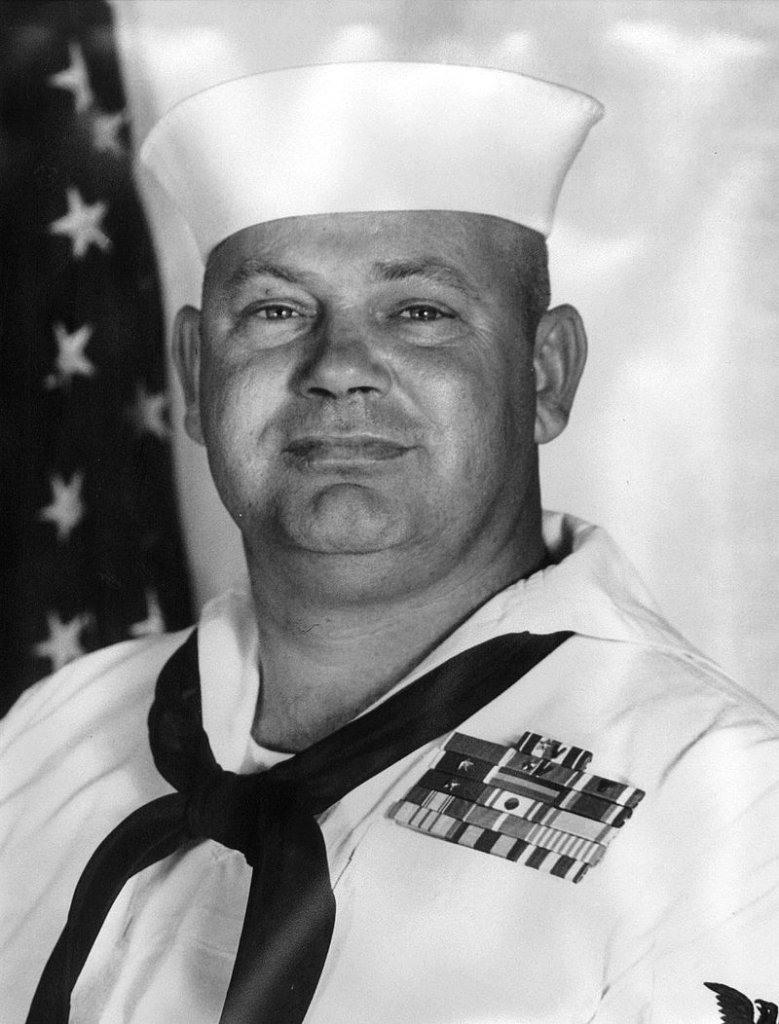
Born in South Carolina in 1930, Cherokee Indian James “Willie” Williams enlisted in the Navy in 1947 as a 16-year-old with a fraudulent birth certificate. While Williams would serve almost 20 years in the U.S. Navy, he received the majority of his medals during the last seven months of service in Vietnam.
Williams served during the destroyer U.S.S. Douglas H. Fox during the Korean War and completed additional tours on several naval vessels following the end of the Korean War. In May 1966, Williams was assigned to command Patrol Boat, River 105 in South Vietnam, which was a 30-foot fiberglass that often carried four men who patrolled inland waterways to prevent the Viet Cong from using them. On July 1, 1996, Williams’s leadership of his patrol that had come under fire from a Viet Cong sampan resulted in the death of five VC and the capture of the enemy boat, which would earn Williams a Bronze Star Medal with a “V” for valor device. In less than a month, Williams would also receive another Bronze Star for valor as well as a Silver Star and the first of three Purple Hearts.
On October 31, 1966, Williams’ actions against the Viet Cong would earn him the Medal of Honor, making him one of the 32 Native Americans to receive this award. During the command of a two-boat patrol, Williams and his crews discovered the increasingly larger force of Viet Cong, which he held at bay each time. During the discovery of a larger force, Williams called for helicopter gunship support but did not wait for the armed forces to attack. His two-boat patrol fought a three-hour battle that destroyed or damaged 65 VC boats and killed 1,200 VC.
Several months later in January 1967, Williams’s actions to receive a drowning man from the Navy dredge Jamaica Bay would earn him the Navy and Marine Corps Medal, sometimes called “the non-combat medal of honor,” and his attack of three VC heavy-weapons companies of 400 fighters, killing 16, wounding 20, and destroying 9 sampans and junks, even when wounded himself would earn Williams the Navy Cross.
During Williams’s last seven months in the Navy, he received every sea-service award for heroism, including the Legion of Merit with a “V” for valor device, two Navy Commendation Medals for valor, and three Purple Hearts. After he returned home, he began a career in the U.S. Marshals Service. Williams died in 1999, but his widow Elaine Williams watched the launching of the Arleigh Burke class destroyer, U.S.S. James E. Williams, in 2003.
Williams became the most decorated enlisted man in the Navy, one of only seven men and the only enlisted man to earn all of the “Big Three” valor awards—Medal of Honor, Navy Cross, and Silver Star Medal. His other awards include the Korean Service Medal, the Armed Forces Expeditionary Medal, the Vietnam Service Medal, the Republic of Vietnam Gallantry Cross, the Republic of Korea Presidential Unit Citation, the Republic of Vietnam Meritorious Unit Citation—both Gallantry Cross and Civil Actions, the United Nations Korea Medal, the Republic of Vietnam Campaign Medal with 1960 device, and the Korean War Service Medal (South Korea).
Air Force
Brigadier General George Everette “Bud” Day (World War II, Korean War, and Vietnam War)
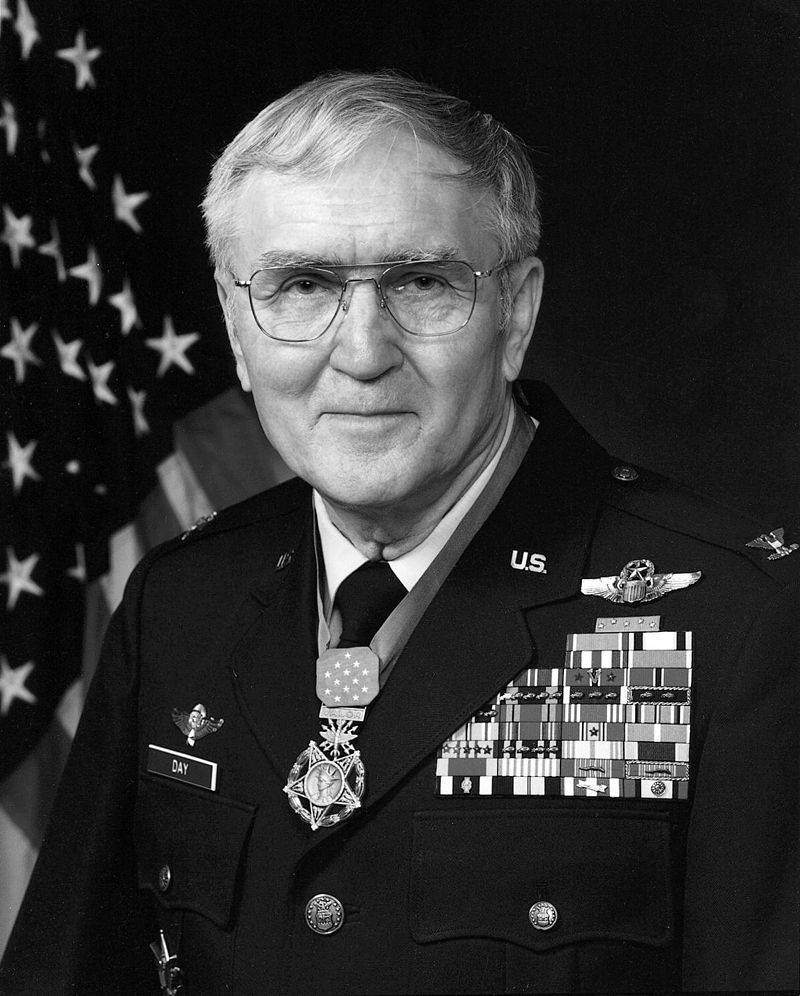
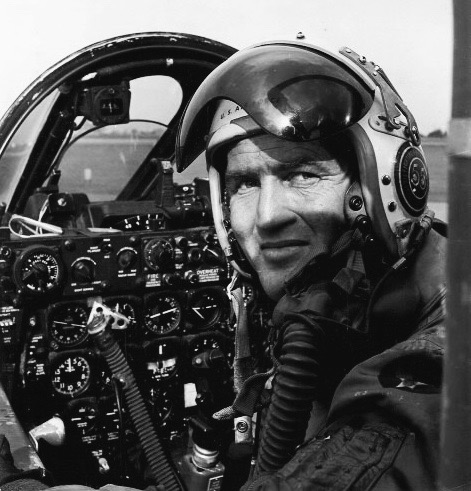
Although you probably don’t recognize the name of Brigadier General George Everette “Bud” Day, he is considered to be the most decorated United States military officer since General Douglas MacArthur. Born in humble beginnings in Sioux City, Iowa in 1925, Day would earn over 70 awards, decorations, and medals.
Like many other young men, Day dropped out of high school to enlist in the Marine Corps in December 1942. He would serve for 30 months in the Pacific Theater. When he was discharged in November 1945, Day used the G.I. Bill to attend college, receiving a Bachelor of Science degree and a PhD in Humane Letters from Morningside College and a Juris Doctorate (J.D.) from the University of South Dakota. During his time in college, Day served in the United States Army Reserves.
In 1950, Day transferred to the Iowa Air National Guard and began active duty in July 1950, earning his pilot’s wings in September 1952. Beginning in 1953, Day flew two Korean War tours in F-84 Thunderjets with the 559th Strategic Fighter Squadron, based out of Japan. From 1955 to 1959, Day would serve with the 55th Fighter Bomber Squadron based at RAF Wethersfield, England.
For roughly the next eight years, Day would command the ROTC unit at St. Louis University in addition to serving as assistant professor of aerospace science and adding a Master of Arts degree in International Law and later serve as an Air Force Advisor to the New York Air National Guard at the Niagara Falls Air Force Base for two-and-a-half years.
In 1967, anticipating a retirement, then Major Day volunteered for a tour in Vietnam. He first served as an F-100 Assistant Operations Officer at Tuy Hoa Air Base and completed 72 missions. In June 1967, Day was reassigned to become the first commander of the Misty Super FACs at Phu Cat Air Base, flying 67 missions in North Vietnam by August. On one mission, the North Vietnamese shot down his plane, and Day was captured by the North Vietnamese. While he originally was able to escape, he was recaptured two weeks later near Quang Tri City and would spend the next five-and-a-half years in a prison camp in North Vietnam. When Day was released on March 14, 1973, Day had survived 2,028 as a prisoner of war.
In 1976, President Gerald Ford awarded Day the Medal of Honor for bravery and leadership during captivity. When Day retired from active duty in 1977, he had earned nearly 70 medals, including the Medal of Honor and the Air Force Cross, one of only two men to receive both awards—the other recipient being Tech Sergeant John Chapman who served in Afghanistan.
Day died in 2013 as a colonel (retired), but would posthumously receive the rank of brigadier general in 2018. The advancement was introduced by former POW cellmate and Senator John McCain.
By the time of his retirement, Day had flown over 6,000 hours and received numerous awards, medals, and decorations, including campaign medals from all three major wars (World War II, Korean War, and Vietnam War), the Distinguished Flying Cross, and the Prisoner of War medal.
Marine Corps
Sergeant Major Daniel Daly (World War I)
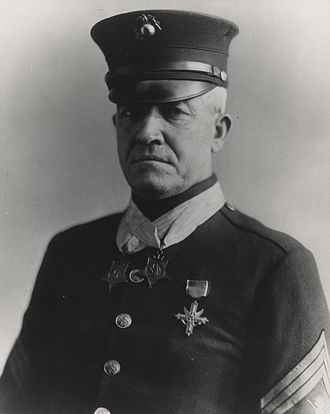
Although you probably don’t recognize the name Daniel Daly, he is one of the “fightiest Marines” who has ever lived and one of the fightiest service members too. One of only nineteen men, including seven Marines, to receive the Medal of Honor twice, Daly and Major General Smedley Butler were the only Marines to receive both Medals of Honor for different actions.
Born 1873 in New York, Daly had established a good record as a boxer even at the small size of 5’6” even before he enlisted in the Marine Corps in 1899. Daly deployed in 1900 during the Boxer Rebellion in China and was part of a small contingent of Marines who had the mission to protect American diplomats in Peking (modern-day Beijing). In mid-August 1900, Daly found himself having to defend a position on top of the wall between two gates, armed only with a rifle and a bayonet alone. During the night of August 14, Daly single-handedly held off several enemy charges while under constant sniper fire. He is believed to have inflicted around 200 casualties. For this action, Daly would receive his first Medal of Honor.
As Daly continued in his Marine Corps career, he was stationed at eight post in the United States and was assigned to numerous ships and saw combat in several countries, including leading a platoon of Marines ashore during the invasion of Veracruz, Mexico in 1914. Throughout his career, Daly would be offered an officer’s commission. But he would turn it down every time, saying that he would rather be an outstanding sergeant instead of just another officer.
In 1915, Daly deployed to Haiti to support the Haitian government’s battle against guerrillas known as Cacos. During the Battle of Fort Diptie on October 24, 1915, Daly and 37 other men who were mounted from the 15th Company of Marines were ambushed on three sides by 400 Cacos. As the Marines fought their way to high ground, they lost 12 horses and a mule that carried their only machine gun. Despite being under a barrage of fire, Daly voluntarily returned to the ravine to get the machine gun strapped to the dead mule, which returned getting past numerous enemy positions. Able to locate the machine gun, Daly returned with the heavy load of the machine gun and ammunition past more Cacos to the Marine position. During the next morning, three squads of Marines attacked the enemy from three different directions and surprised the Cacos, inflicting 75 casualties. Daly would receive his second Medal of Honor for this action.
In 1917, Daly, now 44 years old, would deploy to France with the American entry into World War I. Daly risked his life to extinguish a fire in an ammunition dump at Lucy-le-Bocage on June 5, 1918 and five days later assisted in a counterattack against the enemy at the Battle of Belleau Wood. The acting First Sergeant of 73rd Company, 6th Marines in support of another attack by the 1st Battalion, 6th marines, Daly is thought to have shouted to his men as they entered the wood, “Come on, you sons of bitches, do you want to live forever?” Although Daly was recommended to receive another Medal of Honor, the AEF headquarters rejected the request, believing that no one should receive three Medals of Honor. Instead, Daly received the Distinguished Service Cross and later the Navy Cross.
Daly would leave the Marine Corps in 1929 and live a quiet life until he died in 1937. He received numerous decorations and medals during his Marine Corps career, including the China Relief Expedition Medal, the Philippine Campaign Medal, the Expeditionary Medal with one bronze star, the Mexican Service Medal, the Haitian Campaign Medal, the World War I Victory Medal with Aisne, St. Mihiel, Meuse-Argonne, and Defensive-Sectors clasps, the French Médaille militaire, Croix de Guerre with Palm, and Fourragère. In 2005, the United States Postal Service included Daly on one of four Distinguished Marines stamps alongside John Basilone, John Lejeune, and Chesty Puller.
I had the challenging task of selecting just one extremely decorated service member from each branch, but I’d encourage you to read about the many other decorated U.S. service members like Colonel Edward Rickenbacker (Army Air Corps, World War I) and Lieutenant General Chesty Puller (USMC, World War II and Korean War). The stories of their valor and bravery are truly inspiring.
Sources
- https://www.arlingtoncemetery.mil/Explore/Notable-Graves/Prominent-Military-Figures/Audie-Murphy
- https://specialoperations.com/32397/january-26-1945-lt-audie-murphy-awarded-medal-honor/
- https://www.navytimes.com/military-honor/salute-veterans/2018/11/08/willy-williams-the-most-decorated-enlisted-sailor-in-navy-history/
- https://www.nationalaviation.org/our-enshrinees/day-george-everette-bud/
- https://www.investors.com/news/management/leaders-and-success/fightingest-marine-daniel-daly-won-highest-honors-coined-legendary-phrase/
Guest Contributor: Rachel Basinger is a former history teacher turned freelance writer and editor. She loves studying military history, especially the World Wars, and of course military medals. She has authored three history books for young adults and transcribed interviews of World War II veterans. In her free time, Rachel is a voracious reader and is a runner who completed her first half marathon in May 2019.

